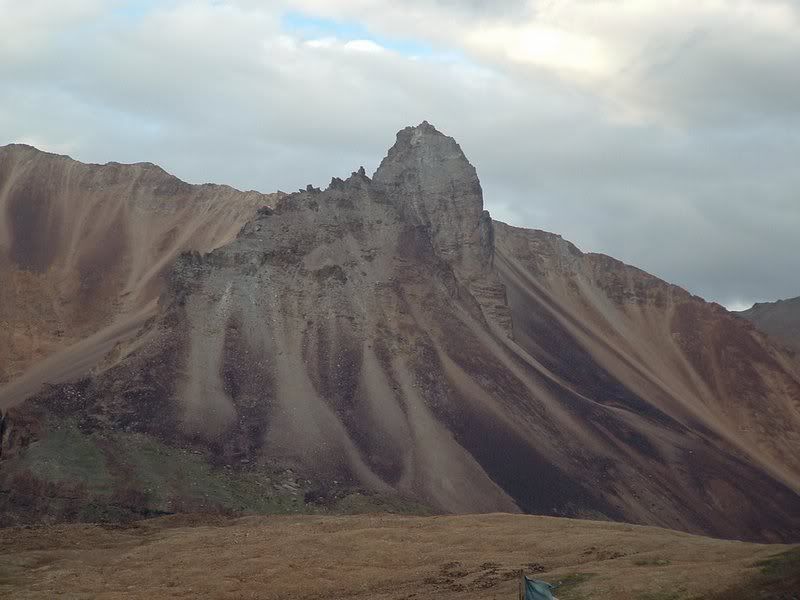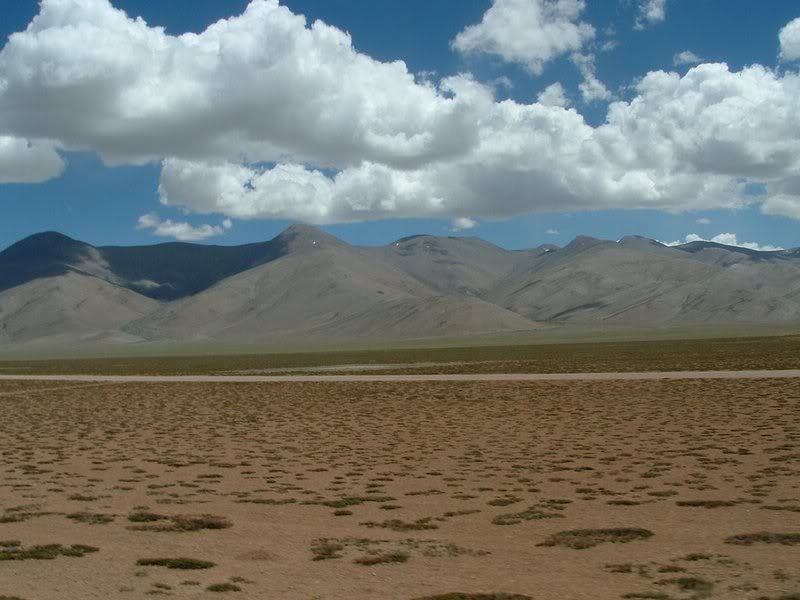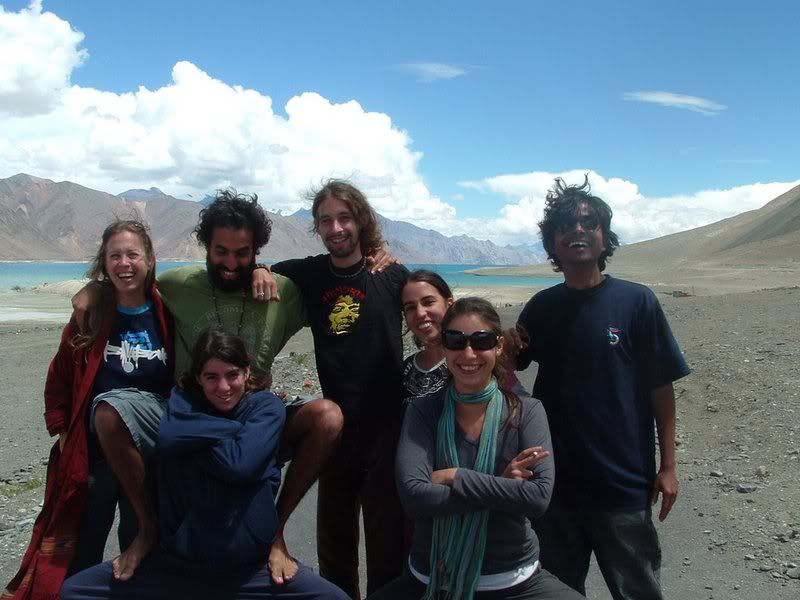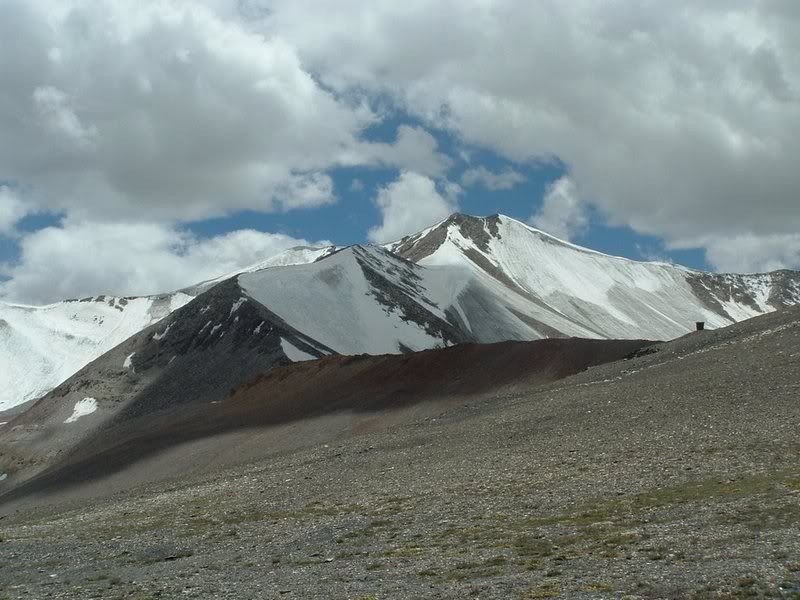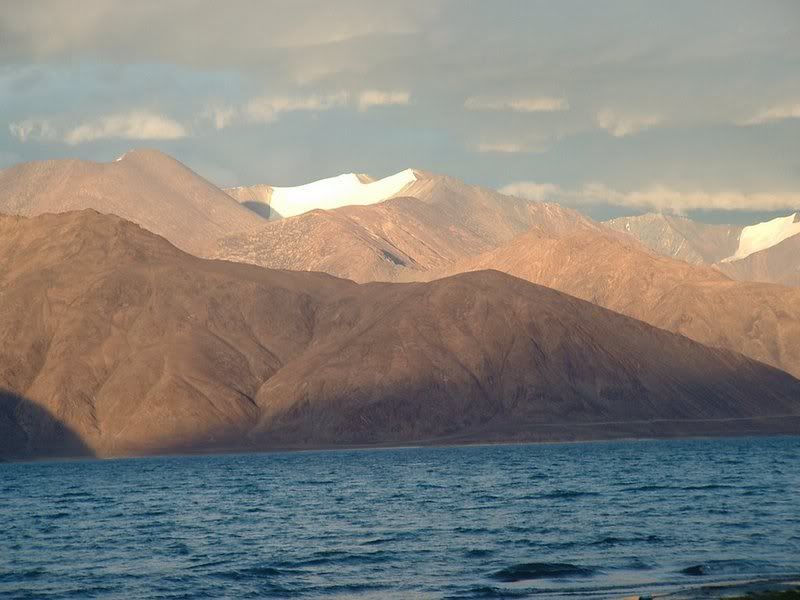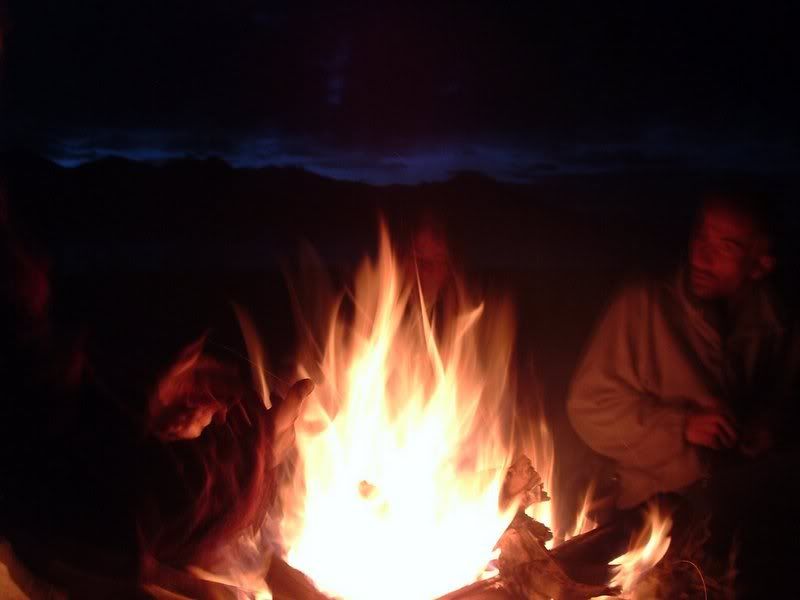– Wikipedia
My love for Music and the above pretty much sums up the reasons I’ve visited Karnataka state four times this year. My first visit in March was to Bangalore to watch Iron Maiden in concert, then in April to visit the ruins of the Vijayanagar Empire in Hampi. The third was Bangalore once again to attend the Aerosmith concert in June; from there I went to Mysore, Bylakupee and Coorg. The fourth and latest trip in August was the longest, close to 10 days and crammed with visits to many places mainly Historical.

Detailed Route Map - Karnataka
Before I visited Karnataka, on the agenda were two places in Kerala state, the first, ‘Guravayoor’ temple where I had to go to get a ‘Pooja’ done, the second was Bekal Fort in Kasaragod, the northern most district in Kerala.
Konkan Railway
The most economical way to reach Kerala is by the Konkan Railway, apart from the low cost of travel, the monsoon season is also the best time of the year to journey on this relatively new line of the Indian Railways. The Western Ghats along which the rail is constructed, block the heavy rain bearing South West monsoon clouds which rush in from the Arabian Sea. As a result of this obstruction, the clouds discharge their moisture and feed the many streams, rivers and surrounding areas. Thanks to this abundant supply of water, the scenery is fantastic, lush fields of paddy, verdant forests, mountains covered with a thick blanket of growth and waterfalls both big and small. The landscape is covered with every imaginable shade of green, from the deepest shade of green to an almost fluorescent green. I soaked up all the sights and enjoyed every bit.
 Konkan Railway
Konkan Railway Guravayoor (Guru Va Yoor) Temple
Trichur (Three shur)
Having finished with my obligations in the temple town, I headed to Trichur to catch the overnight train to Kasaragod and the next place on my itinerary - Bekal Fort. Security at the train station was understandably heavy as it was the eve of India’s Independence day, a large contingent of gun toting cops and railway protection force personnel patrolled the platforms to ensure peace and quiet.
The train that I had to catch was to arrive at 1 in the morning but was delayed, eventually the train pulled in more than an hour late. I got into the compartment and went to my berth, only to find some chap asleep there, called the Ticket Examiner to sort out the issue, (The only reason I write this is for people to understand Railway Logic, which I have since learnt) turns out I made an error while booking the ticket.
According to my logic, the train began the journey from Trivandrum on the evening of the 14th, the scheduled arrival time at Trichur was 1 AM which made it the 15th, hence I booked my ticket with the departure date the 14th, knowing that if I select my departure date as the 15th it would actually mean 1 AM on the 16th and thus 1 day later.
Alas my logic / pleadings did not go down well with the Ticket Examiner; I had to shell out 400 hundred Rupees by way of penalty for my honest mistake. It was close to 3 AM by the time the issue was sorted out, was totally pissed of at the ticket checker, and cursed him lots as I dozed off.
Kasaragod (Kas ra code) – Bekal (Bay cull) Fort
Reached Kasaragod at 9 AM, freshened up at the waiting room at the station and headed out to Bekal fort, around 15 KM’s from the city bus stand. If you have seen the Bollywood flick ‘Bombay’ then you have seen the fort, the song ‘Tu Hi Re’ from the movie was shot here and for good reason, the view is spectacular. Waves lash the rocks at the base of the cliff and lower ramparts of the fort, a fishing village on one side, a beach on the other, and hundreds if not thousands of Coconut trees which surround the fort.
 View from Bekal Fort
View from Bekal Fort Despite being part of various military campaigns, Bekal is in a surprisingly good condition, unlike so many forts in India which sadly lie in a state of ruin, probably because the maintenance of the fort has been handed over to the ASI (Archaeological Survey of India). The observation tower in the center of the fort also affords an impressive view of the picturesque surroundings. The tower is also used to hoist the Indian flag. I’m not sure if they unfurl it everyday or if it was unfurled because it was the 15th of August, which marked 60 years of Independence from the British. Call it Nationalism or some other word but seeing the flag flutter in the breeze that day, my heart swelled with pride. I make it a point to attend Independence and Republic day flag hoisting ceremonies every year, this was the first time I had missed, so this helped lessen my guilt.
 Observation Tower - Bekal Fort
Observation Tower - Bekal Fort
KARNATAKA
Once I was done with the tour, had lunch at a local joint then returned to the train station to pick up my backpack. From there I went to Kasaragod bus station. My journey through Karnataka was just a stop away, point of entry - Mangalore, around 50 KM’s from Kasaragod. By that evening I reached Mangalore, waited for the bus to Hassan for close to an hour, it never turned up. A shopkeeper near the bus stop helped to arrange a tourist taxi which was returning empty to Bangalore. The decision to catch the taxi worked in my favor as I could now get off at Channarayapatna rather than Hassan.
The main road link connecting Mangalore and Bangalore is NH (National Highway) 48, ideally a scenic route, the road snakes along the Netravathi river before entering thick forests and steep gradients. Unfortunately for most of this stretch, there is no road to speak of, only stones, pebbles and dust clouds. Subsequently reached Channarayapatna by 11 PM, stayed over at a lodge as there was no bus service to Shravanbelagola that late. Woke up early the next morning to get an early start, there was much to see that day.
As it’s a religious site, no footwear is allowed when you climb the 620 steps to the summit. It’s a steep climb; I had climbed but 20 steps and was beat. 620 is a finite number but that morning it felt like forever. By the time I reached the gate of the shrine, I was totally exhausted, dehydrated and kinda surprised that I’d made it. The view from there was neat, the tank/pond in the center of the town and Chandragiri hill with the other temples were clearly visible along with the surrounding countryside.
 View Atop Vindyagiri
View Atop Vindyagiri Statue of Bahubali (Gomateshwara) I visited the other shrines in the compound, which housed the statues of the Tirthankaras of the Jains and then walked down. My plan was to walk up Vindyagiri and then Chandragiri, but after that very tiring climb, I switched to Plan B – Are you crazy, leave now.
Statue of Bahubali (Gomateshwara) I visited the other shrines in the compound, which housed the statues of the Tirthankaras of the Jains and then walked down. My plan was to walk up Vindyagiri and then Chandragiri, but after that very tiring climb, I switched to Plan B – Are you crazy, leave now.Tip - If you plan to go there, please carry a large bottle of water, wear sunscreen and cotton clothes, use glares and socks to lessen the effect of the scorching sun.
Halebidu (Hal lay be du) and Belur (Bay lur) Temples
I checked out from the lodge at Channarayapatna and headed towards Hassan, had a quick lunch there and set out for Halebidu.
“Halebidu was the capital of the Hoysala dynasty and is the site of one of the finest examples of Indian temple architecture ‘Hoysaleswara’ Temple. It was built in the 12th century by Ketamala and attributed to Vishnuvardhana, the Hoysala ruler at the time. The temple is dedicated to Lord Shiva.” – Wikipedia.
Hoysaleswara Temple - Halebidu
The temple is built on a platform and is star shaped. The temple is covered with sculptures of varying sizes; they depict Gods, Animals, and scenes from Hindu Mythology, all of them intricate and finely detailed. The workmanship of the artisans – unbelievable !!! I spent an hour just roaming around the complex, inside the temple, the grounds, clicked many snaps before making my way to Belur.

Dvarapala (Guardian) - Hoysaleswara Temple
I caught a bus to Belur, which is around 16 KM’s from Halebidu, it was a very refreshing drive, picturesque settings with plantations and farms on both sides of the road, slight nip in the air, a pleasant change from the intense heat of Shravan Belagola.

Enroute Halebidu - Belur
“Belur was the early capital of the Hoysala dynasty, ‘Chennakesava Temple’ (dedicated to Lord Chennakeshava, meaning handsome Vishnu) is the major attraction in Belur. It was built by king Vishnuvardhana in commemoration of his victory over the Cholas at Talakad in 1117. Legend has it that it took 103 years to complete and Vishnuvardhana's grandson Veera Ballala II completed the task.” – Wikipedia.
Chennakesava Temple - Belur
The temple in Belur was also built on a platform and star shaped and as amazing as the one in Halebidu. Intricate carvings, Hoysala royal emblems, statues, etc, I’d seen pictures of Hoysaleswara and Chennakesava temple prior to my visit and was impressed. However, unless you see them for yourself, you won’t be able to appreciate its true splendor. I wish I could use some other words but I’ll stick with the clichéd ‘The pictures don’t do justice’, truly some of the finest examples of Indian Temple Architecture.
Hassan (Ha Sun)
I’d wanted to spend more time in Belur but couldn’t as I had to reach Hassan before 8:30 PM and catch the last bus to Shimoga. From there catch the connecting bus to Jog Falls. Made it to Hassan by around 8:00 PM, had a light snack and headed to the bus station. By the time I got my backpack from the cloak room, the bus was nearly full; the empty seats were most uncomfortable. The road from Hassan to Shimoga was also in a bad condition and could not sleep during the journey, by the time the bus reached Shimoga it was 1:30 AM, found out the connecting bus would reach by 4:30 AM. With nowhere to go at that hour, I decided to spend time at the bus station. My experience at Madikeri (Coorg) bus station couple of months ago flashed before my eyes, it was terribly unpleasant, cold, mosquito ridden and empty.
Shimoga (Shu moga)
Shimoga was different; there were lots of people, those waiting for buses, beggars and riffraff. I felt sleepy but did not want to take any chances and lose my backpack and/or miss the bus if I dozed off. I drank many cups of tea and chain smoked to keep awake. However, after a couple of hours, the tiring climb under the hot sun at Shravan Belagola, hardly any sleep for the past two days, roaming around Halebidu, Belur and Hassan, hours cooped in the bus without sleep, all started to take a toll on my senses. I found it hard to differentiate between real and imaginary sounds and voices, could barely keep my eyes open, started to drift in and out of consciousness.
How I heard the conductor say Jog Falls amid all the other sounds and voices is beyond me. I rushed inside only to find every seat occupied, after that ordeal at the bus station, the last thing I wanted to do was stand for three hours. Clearly it wasn’t my day or night for that matter. Thankfully after some time, the driver and conductor allowed me to sit on a makeshift seat up ahead with them. I’ve never been more grateful in my life, tried my best to make small talk with them but kept falling asleep. It was quite risky since there was nothing between me and the windscreen, had there been any sudden braking, I’d be nothing more than a crash test dummy. I kept awake with the greatest difficulty, finally just when I thought it would be impossible to stay awake any longer, someone got off and for the first time in two days, I slept soundly.
Jog (Jo gh) Falls
In forty minutes the bus reached and had to be woken up, still sleepy but less fatigued thanks to the nap. I got off the bus and walked towards the falls, hoped the ordeal of the journey was worth the visit. The next instant I was staring at this massive waterfall across the valley, it was totally worth all the hassles I’d endured. Simply put, a jaw dropping moment.
“Jog Falls (also called Gersoppa) is the highest untiered waterfall in India, located in Shimoga District of Karnataka state. It’s created by the Sharavathi River falling from a height of 253 meters (829 ft) it splits up into four different tracks which are named in accordance with their perceived trajectories. (left to right)
Raja (King): Named so because of its apparently 'dignified' and 'serene' fall.
Roarer: This stream appears out of a mass of rocks, making a tremendous amount of noise.
Rocket: Consists of a large volume of water streaming out of a small opening at a very high speed.
Rani (Queen) also called Lady: The stream has a winding, twisting trajectory, said to resemble the movements of a female dancer.” – Wikipedia.

Jog Falls
It was an awesome sight, each track of the waterfall clearly identifiable, the cascading water looked as if falling in slow motion. The sound as it crashed onto the rocks below, loud and clear right across the valley. It was a pleasant day, slightly overcast and misty. One of the best panoramas I’ve seen yet.
I got hold of a tourist guide and went sightseeing, first went to the spot across the valley where the cascades originate. I did not know but it was time for another jaw dropping moment. The huge volume of water, the deafening sound as water pummeled rock, I stood close to the edge and followed the flow as it dropped hundreds of feet, barely noticed the people who had gathered at the base, they were the size of ants, it was so far down. The sheer scale hits your senses, visually and aurally. You feel so insignificant, yet at the same time elated just by being there. A must see, if you don’t have a fear of heights.
 Raja - Jog Falls
Raja - Jog FallsTip - One of the most popular tourist destinations in Karnataka. The best time to visit is during or just after the monsoon, when there’s ample water supply.
Sirsi (Si r see) and Hubli (Hoob Lee)
By early afternoon, I was done with the tour, had to move on to the next stop on the itinerary, Badami via Hubli. There was no direct bus to Hubli, had to first go to Sirsi and from there catch a bus to Hubli. I’d been traveling on National Highways the past few days and it had been a bad experience overall. Rain, heavy traffic, no maintenance, all resulted in roads, which were in a degraded condition. However, I was in for a surprise, the road from Jog to Sirsi and from there to Hubli were State Highways, and in pristine condition (most of the way). They hardly looked used, scenic views, also managed to nap for a while.
I reached Hubli by 8 PM, the original plan was to go directly to Badami but was real tired with the traveling and lack of sleep. I needed a bed to sleep on, so decided to stay that night in Hubli, found a decent lodge near the railway station, had dinner and slept early. Woke the next morning all refreshed, as I was already in Hubli, decided to visit a local attraction, made inquiries and went to the famous Sri Siddharudha Swami Temple.
 Sri Siddharudha Swami Temple - Hubli
Sri Siddharudha Swami Temple - Hubli On my return, I checked out, went to the bus station to go to Badami. I caught the by now familiar KSRTC (Karnataka State Road Transport Corp) bus going towards Badami. The road for most of the journey was decent; passed many villages and farmlands. It was clearly a fertile belt, where crops such as Sugarcane, Millet and Sunflower were grown.
 Sunflower Fields on the way to Badami
Sunflower Fields on the way to Badami
Badami (Baa Da Me)
"Badami was the regal capital of the Chalukyas from 540 to 757 AD. It is famous for rock cut and other structural temples. It is located in a ravine at the foot of a rugged, red sandstone outcrop that surrounds Agastya lake. Badami was founded in 540 A.D. by Pulakesi I (535-566 AD), an early ruler of the Chalukyas. His sons Kirthivarman (567-598 AD) and his brother Mangalesha I(598-610 AD) constructed the cave temples. The greatest among them was Pulakeshi II (610-642 AD) during his reign the Chalukyas of Badami saw their kingdom extend over most of the Deccan." – Wikipedia.
 Agastya Lake - Badami
Agastya Lake - Badami I reached Badami by around 5:30 PM, checked into a lodge not far from the bus station. By the time I freshened up, it was past 6 PM and hence unable to visit the monuments. The temples and caves are open to the public from 6 AM to 6 PM. Walked around the town aimlessly as I had nothing else to do, ate at a local diner and then returned to my room, hit the sack by 10 PM.
“Aihole was the first capital of the early Chalukyas. Here they built over 125 temples in various styles and is said to be a laboratory of experiments in rock cut architecture. It is from these temples that the Chalukyas gained their experience and went on to build the great temples of Pattadakal.” – Wikipedia.

Pattadakal – “The temples were built in the 8th century. The uniqueness of this place derives from the presence of both the Dravidian or the Southern and the Nagara or the Northern (Indo-Aryan) styles of temple architecture.”– Wikipedia
 Pattadakal Temples
Pattadakal Temples A vast complex of temples, the design is a mix of North and South Indian styles. I was very impressed with the various temples there, masterful workmanship both exterior and interiors of the temples. I spent a good hour there, as there was quite a lot to see.
Badami
I returned to Badami by 4 PM, as I had only 2 hours to visit the monuments, did not visit the caves, by then I’d decided to spend another day in Badami, which meant I had the next morning to explore the caves and other temples. I visited Bhutnatha temple on the fringe of Augustya lake.
On my way back to the lodge, I stopped at a local eatery called ‘Hotel Parimal’ (close to the bus stand), to have a snack. A run of the mill joint in appearance, but the food they served was easily one of the best I’ve had. I had breakfast and lunch the next day, tried different items on the menu to make sure it wasn’t some kind of fluke, it wasn’t, inexpensive as well. If you visit Badami, make it a point to try this place out.
The next morning, I set out early to visit the caves; there are a total of 4 caves, all on different levels. The first 3 caves are dedicated to Hindu gods while the fourth is dedicated to the Jain religion. The first cave is dedicated to Shiva while the second and third are dedicated to Vishnu.

Badami Caves
The caves are other examples of fine Chalukyan workmanship, not just for the statues and carvings but also the frescoes which adorn the caves. Statutes and temples carved out of rock are inherently better suited to withstand the test of time. The same can’t be said of the frescoes, exposure to the elements coupled with centuries of neglect, have left them faded. Fortunately, the museum at Badami has a reproduction of one of the frescoes; it was done in the 1970’s and it shows the details that are not visible today on the original. The museum also has other artifacts excavated from Badami as well as surrounding areas dating back to the Stone and Iron ages.
Once I was done with the museum, I walked up the hill; to the other temples and fort. The view from the top is something, the whole of Badami town, Agastya Lake and the caves across the lake. After spending some time, I walked down, was done with Badami and it was time for me to leave.
 View from the Fort - Badami
View from the Fort - Badami I checked out and went to the station to catch the train to Bijapur, the last place on my Itinerary. I was excited about the journey as I would be traveling on the meter gauge line after many years. The railways have embarked on an upgrade program to replace the smaller Meter gauge with the current standard - Broad gauge. It’ll only be a matter of time before the entire route from Badami to Bijapur will be broad gauge.
Badami Station - Meter Guage Rail
Bijapur (Be Jaa pur)
“The city came under the influence of the Khilji Sultanate in Delhi by the late 13th century. In 1347, the area was conquered by the Bahmani Sultanate of Gulbarga. By this time the city was being referred as Vijapur or Bijapur. In 1518, the Bahmani Sultanate split into five splinter states known as the Deccan sultanates, one of which was Bijapur, ruled by the kings of the Adil Shahi dynasty (1490-1686). Bijapur is rich in historical attractions, mainly related to Islamic architecture."- Wikipedia
By early evening, I was in Bijapur, checked into a hotel close to the Gol Gumbaz, the star attraction, had no plans of visiting the sites that evening. I was to depart for Bombay the next afternoon, which gave me till noon the next day to see the historical sites. That evening I roamed around Bijapur and sampled the Mughlai food that it’s famous for.
The next morning I started my tour of Bijapur with a visit to the Gol Gumbaz, I was about to enter when a guide approached me, he had a Tanga (horse drawn carriage) and offered a tour of the other sites in Bijapur, the asking price of Rs 100 for 1 person seemed reasonable. It was only after the tour started, I realized this was the best way to see the attractions, as they’re spread out and the roads are confusing. Even if you have your own vehicle, I’d recommend a guided tour, no chance of getting lost. Anyways, the Tanga ride was decent, visited the other historical sites in Bijapur such as the Jama Masjid, Malik E Maidan cannon, Ibrahim Roza, Hyder Burj etc and then returned to the Gol Gumbaz compound.
 Jama Masjid - Bijapur
Jama Masjid - Bijapur
The first place I visited in the compound was the museum, it’s a must see, on display are weapons, paintings, statues, manuscripts as well as household items such as locks, utensils, carpets etc from the Adil Shahi period. Then stepped into the Gol Gumbaz.
“Gol Gumbaz is the mausoleum of Muhammad Adil Shah II (1627-57) of the Adil Shahi dynasty of Indian sultans, who ruled the Sultanate of Bijapur from 1490 to 1686. The tomb was built in 1659 by the famous architect, Yaqut of Dabul. The structure consists of a massive square chamber measuring nearly 50 m on each side and covered by a huge dome 37.9 m in diameter. The dome is supported on giant squinches supported by groined pendentives while outside the building is supported by domed octagonal corner towers. The Dome is the second largest one in the world which is unsupported by any pillars.” – Wikipedia

Gol Gumbaz - Bijapur
It’s without a doubt the best attraction in Bijapur, a grand structure, very impressive, apart from the design, its well known for the acoustics of the whispering gallery. A clap, a howl, a whisper, anything and everything is amplified and echoed many times. And everybody out there wanted to prove it worked. There were people who screamed hysterically, made animal sounds, laughed like they were insane and to complete the scene, a love-struck Romeo who recited a sad poem on the falling out of love. A mishmash of sounds and voices, it was fun to say the least. With this I completed my trip through Kerala and Karnataka, the only thing left to do was to catch the train back to Bombay. I boarded the train in the afternoon and by the next morning I was back home.
I had not imagined my trip to be so fruitful. First of all, I took a chance by going during the monsoon season, had it rained heavy, as it usually does, it would have effectively meant the end of my trip. I was fortunate that it hardly rained, there were clear skies for most of the days. I was on a tight budget and comfort was the last of my priorities, had to rely on public transport almost exclusively; at times it did get to me with all the weird schedules. Lived in cheap hotels and mostly ate street food but in retrospect they were just minor parts of my sojourn. None of those so called hardships could compare with the wonderful time I had, so many jaw dropping moments, so many experiences, close to ten days of lessons in Indian History. In fact if I had to name this trip, it would be ‘10 awesome days on a $ 100’.
Addendum
ASI (Archaeological Survey of India)
Most historical sites are under the purview of the ASI and they have done a great job in restoration and maintenance. From Bekal Fort, Aihole, Pattadakal etc all were maintained well, manicured lawns and clean. In my opinion, all this presentation not only helps to appreciate the beauty but also enhances the historical significance of the place to lay persons. And all this for Rs 5/- (for Indian citizens), non Indians have to pay an entry fee of Rs 100/- (approx 2∙5 USD), entry to ASI museums for all nationalities is a paltry Rs 2/- I hope they continue to unearth (couldn’t resist that) more of India’s rich past to showcase to all.
Random Acts of Kindness
A few weeks ago, my friend Unmesh forwarded an article on something called Random Acts of Kindness. Definition - "A random act of kindness is a purportedly selfless act performed by a person or persons wishing to either assist or cheer up a stranger." It was on this trip that I experienced this first hand, not once but many times.
These are just a few instances of that kindness, Salim and his friends in Kasaragod who offered weed for free (I’d merely asked for directions to Bekal fort, BTW I politely declined.) The shop keeper in Mangalore, who arranged the taxi to Hassan. My co passenger Abdul and driver Arun, who waited till I got a place to stay in Channarayapatna, they waited, despite the fact they were already late and still had to cover a few hundred KM’s to their destination. The bus conductor and driver on the way to Jog falls who allowed me to sit with them as there was no seat, they didn’t have to.
It would have been perfectly ok if nobody helped me, for the simple fact that we were strangers but yet they went out of the way to help me and I was touched. When you are the recipient of such kindness, it becomes very easy to do things for others. It’s like a chain reaction, try it, you’ll see.
You Tube Video Clip
A slideshow of some pics taken during this trip.
Photo Albums
I clicked more than 900 pics in 10 days, I’ve shared the top 100.
Album 1

by avinashmanohar
Album 2

by avinashmanohar
Album 3

by avinashmanohar
Links
Archaeology India
History of Karnataka
*****








 Bhima's Gate
Bhima's Gate


